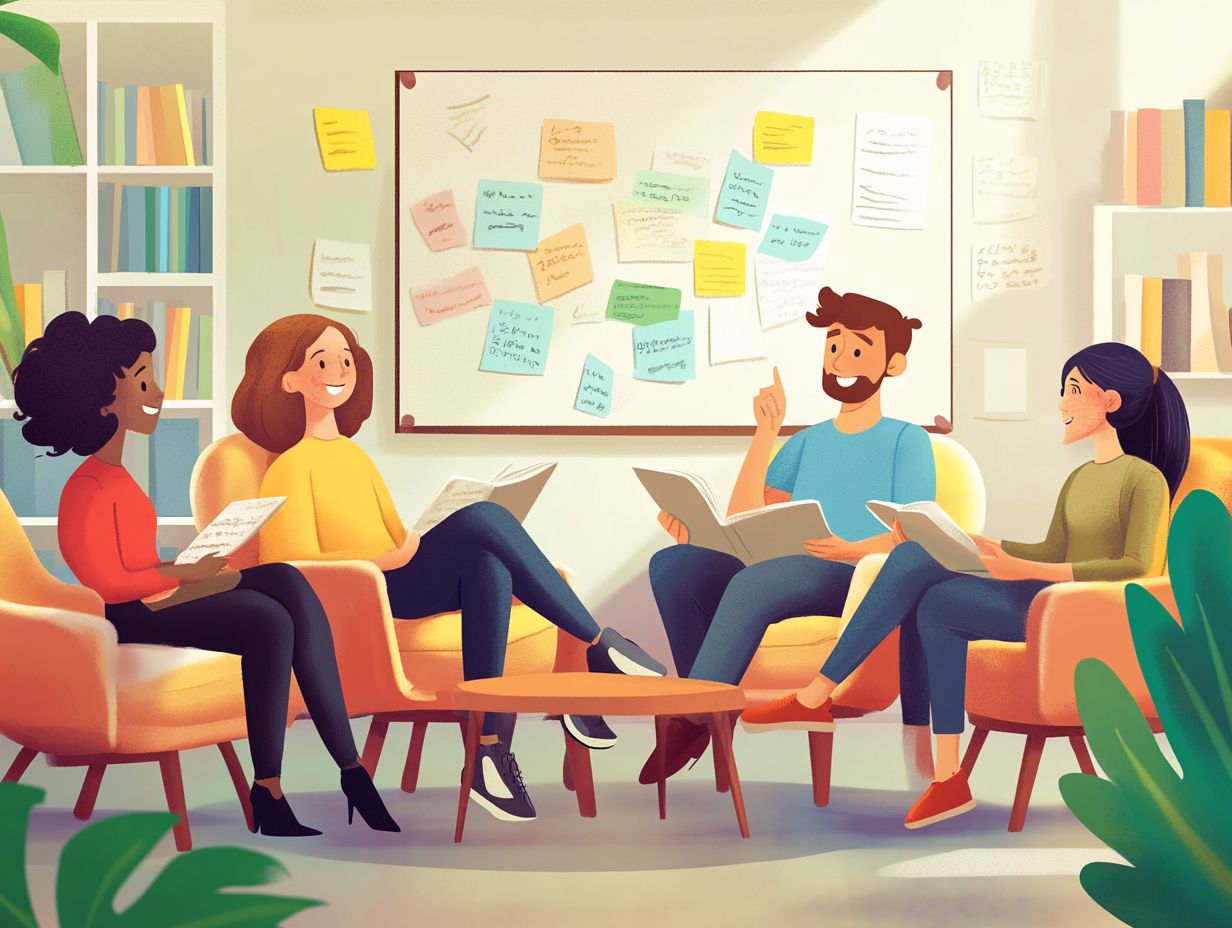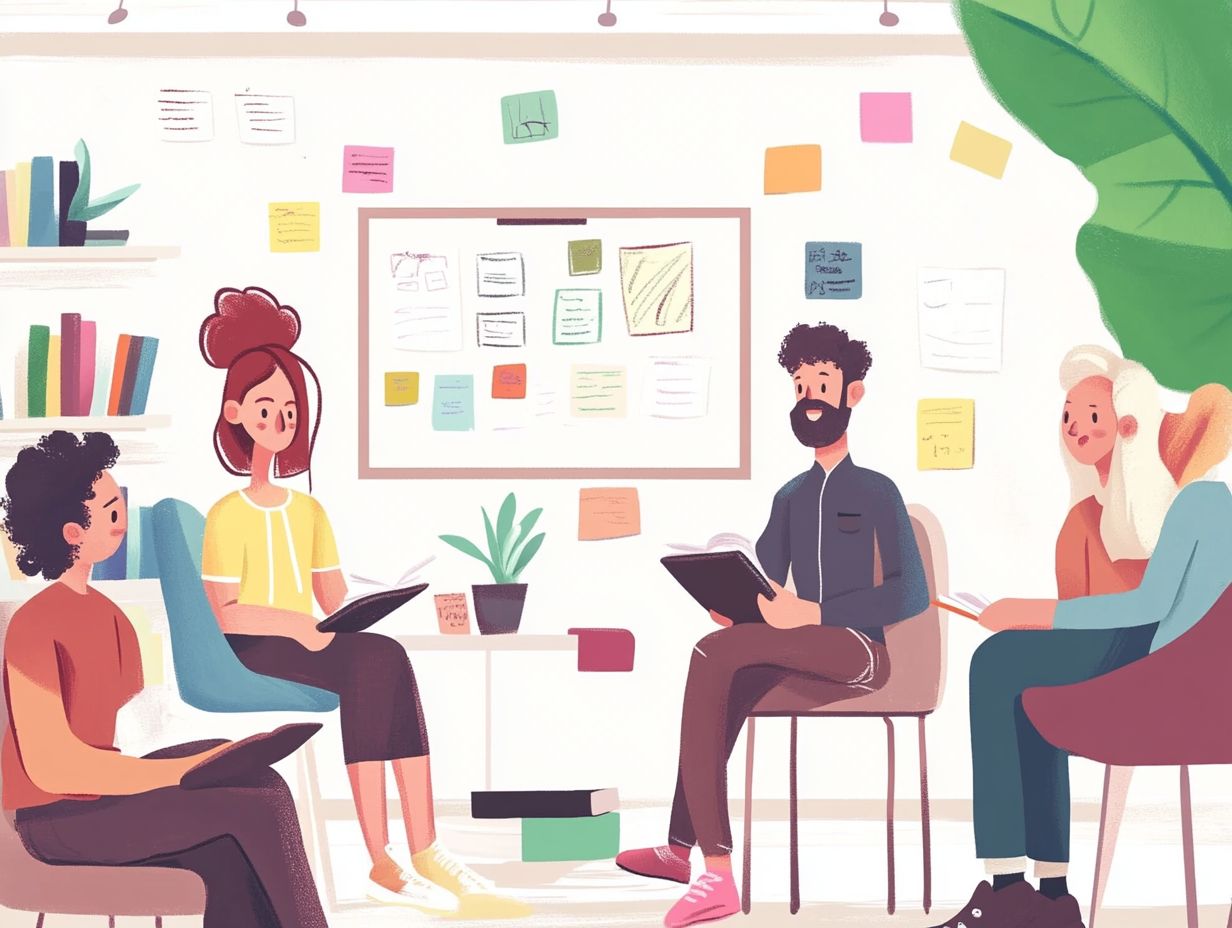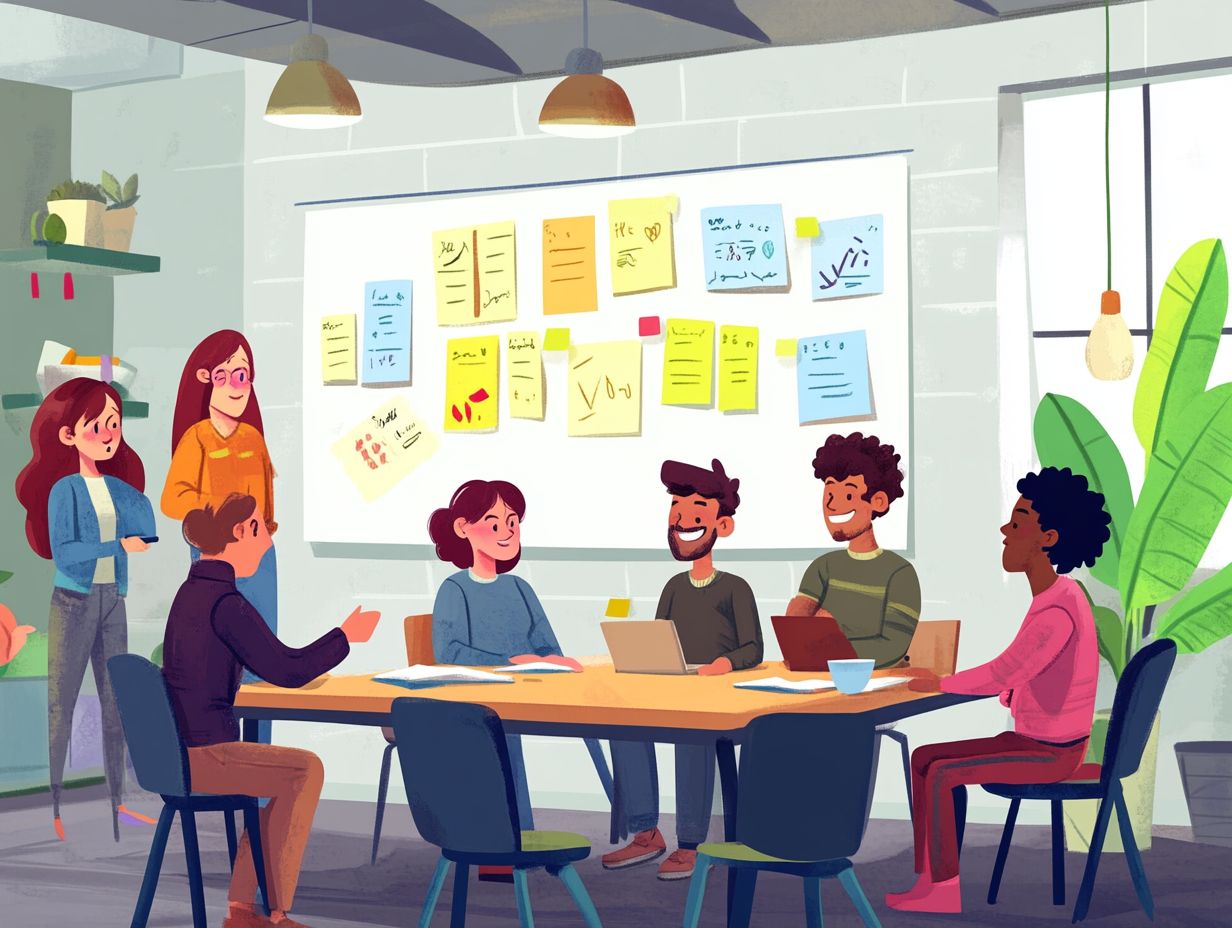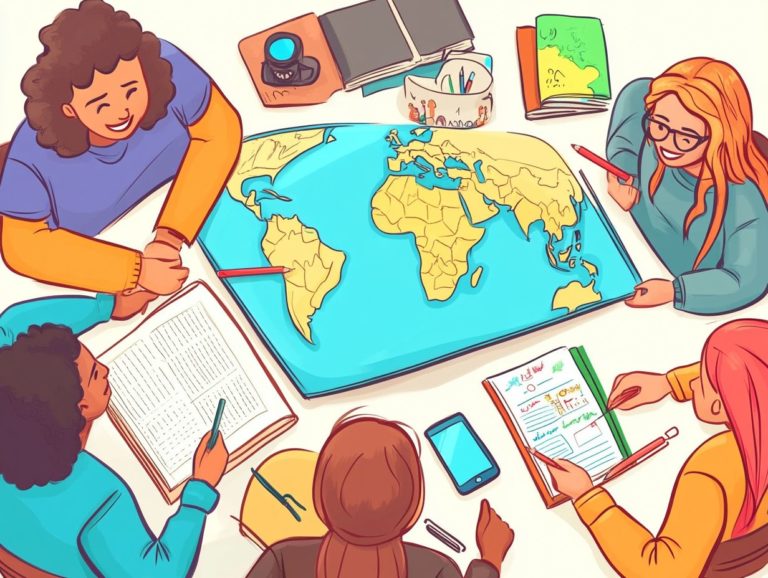Understanding Different Language Learning Styles
Language learning is far from a one-size-fits-all journey. Just as each individual possesses unique preferences and strengths, the ways in which they learn languages can differ remarkably. Let s dive in and discover your unique learning style now!
This article delves into the four primary language learning styles Visual, Auditory, Reading/Writing, and Kinesthetic. By identifying your personal learning style, you can evaluate your strengths and weaknesses, allowing you to adapt your study methods for more effective results.
Uncover how to customize your approach and unlock your full language acquisition potential!
Contents
Key Takeaways:

- Understand the four main language learning styles: visual, auditory, reading/writing, and kinesthetic.
- Identify your personal learning style to adapt your study methods.
- Tailor your study approach to your learning style for better retention.
What are Language Learning Styles?
Language learning styles include the unique strategies you use to master new languages. They involve various methods designed for different types of learners, such as visual, auditory, and kinesthetic. Understanding these styles is important in education because it helps tailor lessons that enhance student interest and understanding.
If you identify as a visual learner, you likely thrive with diagrams, videos, and imagery that help you understand through sight. On the other hand, auditory learners benefit from listening exercises, discussions, and music that turn language learning into an engaging experience. If you’re a kinesthetic learner, you excel with hands-on activities that let you practice language skills through movement and interaction.
Recognizing and integrating these styles is essential for educators, as student feedback influences teaching methods and enhances understanding and communication in language learning. By personalizing education based on these preferences, you can form deeper connections with the language and develop a lasting appreciation for the journey of learning.
The Four Main Language Learning Styles
Understanding the four primary language learning styles visual, auditory, reading/writing, and kinesthetic can significantly improve your language education efforts. Recognizing these styles allows educators to implement customized approaches that resonate with each student s unique preferences.
This tailored methodology creates a more engaging and impactful learning experience.
Visual Learning
Visual learning is an approach that helps you understand and remember information better through visual aids such as charts, diagrams, and videos. This method is highly effective for many students, especially in language learning.
This strategy takes advantage of your natural affinity for images, making it easier to grasp complex ideas. For example, using infographics can effectively illustrate grammar rules, while flashcards with vibrant images can significantly boost your vocabulary retention.
Activities like creating storyboards or digital presentations not only improve your language skills but also encourage collaboration with peers. You can easily use visual aids in your lesson plans, employing pictures and mind maps to spark interest and deepen your understanding of new words and phrases.
By addressing the needs of visual learners, educators can create a dynamic and interactive classroom environment that enhances overall language proficiency.
Auditory Learning

Auditory learning focuses on listening and speaking. People who prefer this style thrive in environments rich with lectures, discussions, and audio resources.
If you learn through sound, you may find that your understanding improves significantly. Engaging with podcasts, audiobooks, and group discussions can enhance your ability to understand and remember what you hear.
When you listen to explanations or join verbal dialogues, you grasp concepts more effectively. Educators can foster an interactive classroom atmosphere that encourages communication.
This dynamic exchange enhances retention and boosts your confidence. You will remember new information with greater effectiveness.
Reading/Writing Learning
Reading and writing as a learning style emphasizes engagement through text-based activities. You excel at understanding information through written language.
This approach allows you to immerse deeply in materials, making you an active participant in learning. Writing essays sharpens your composition skills while cultivating critical thinking and personal expression.
Reading comprehension exercises are vital, helping you extract meaning from complex texts. Quizzes challenge you to recall and reflect on your reading, ultimately enriching your vocabulary.
Embracing reading and writing techniques boosts your language proficiency and fosters lifelong learning habits.
Kinesthetic Learning
Kinesthetic learning is all about hands-on experiences. This style thrives on movement and engaging physically with materials to enhance comprehension and fluency.
Incorporating role-playing scenarios lets you practice conversations in realistic contexts. Games like charades or vocabulary relays create a fun atmosphere for natural language absorption.
Imagine setting up a marketplace or cooking a recipe; these simulations help you apply vocabulary and grammar in practical ways. Such dynamic methods foster collaboration and deeper understanding.
Identifying Your Personal Learning Style
Identifying your personal learning style is essential for effective language acquisition. Understanding how you learn best allows you to customize your study methods.
This tailored approach boosts engagement and significantly enhances your overall comprehension.
Assessing Your Strengths and Weaknesses

Assessing your strengths and weaknesses in language learning is a crucial step in elevating your educational journey. This step reveals effective methods for your unique learning style.
By systematically analyzing these personal attributes, you can better understand the w ways you learn best whether you thrive in visual environments, auditory settings, or kinesthetic activities. Incorporating feedback from peers and instructors can illuminate areas that may need improvement or adjustments.
This reflective process enables you to choose study materials that resonate with your innate abilities, whether they involve interactive apps, traditional textbooks, or immersive experiences.
Ultimately, this custom approach makes language learning faster and way more fun!
Adapting Your Study Methods to Your Learning Style
Adapting your study methods to align with your unique learning style is crucial for maximizing the impact of your language education. By doing so, you can leverage the most effective resources and techniques that truly resonate with your preferences.
This ensures a more enriching and rewarding learning experience.
Tailoring Your Approach to Maximize Learning
Tailoring your approach to language learning can significantly enhance your educational outcomes. By engaging in activities that align with your specific preferences, you ll boost your overall comprehension.
Incorporating diverse strategies can make a world of difference. If you thrive on imagery, visual aids can be your best friend. For those who prefer a hands-on approach, interactive games can ignite your enthusiasm.
And if you re an auditory learner, structured conversation practice can be invaluable. Imagine participating in group discussions not only does this boost your confidence, but it also strengthens your fluency by reinforcing vocabulary through real-world usage.
Journaling in the target language is another powerful tool; it enhances your writing skills while creating a personal connection to the material. These personalized methods foster greater engagement and enable you to navigate the complexities of language acquisition with ease and effectiveness.
Frequently Asked Questions
What are different language learning styles?

Different language learning styles refer to the various approaches or methods used by individuals to learn a new language. These can include visual, auditory, kinesthetic, and tactile learning.
Why is it important to understand different language learning styles?
Understanding different language learning styles can help individuals identify the most effective method for themselves, leading to a more efficient and enjoyable learning experience. It also allows for better communication and teaching techniques between language learners and instructors.
What are visual language learners?
Visual language learners learn best through visual aids such as pictures, diagrams, and videos. They rely heavily on seeing written or graphical representations of new words and concepts to understand and remember them.
What are auditory language learners?
Auditory language learners prefer to learn through listening and speaking. They learn best through conversations, lectures, and audio recordings. These learners have a good ear for pronunciation and can easily pick up new vocabulary through listening.
What are kinesthetic language learners?
Kinesthetic language learners learn best through hands-on activities and movement. They need to physically engage with the language through activities like role-playing, games, and other interactive exercises to fully understand and retain new concepts and words.
What are tactile language learners?
Tactile language learners rely on touch and physical objects to learn a new language. They may use flashcards, manipulatives, or other tactile materials to visually and physically engage with the language. These learners also benefit from physically writing or tracing new words and characters to remember them.





